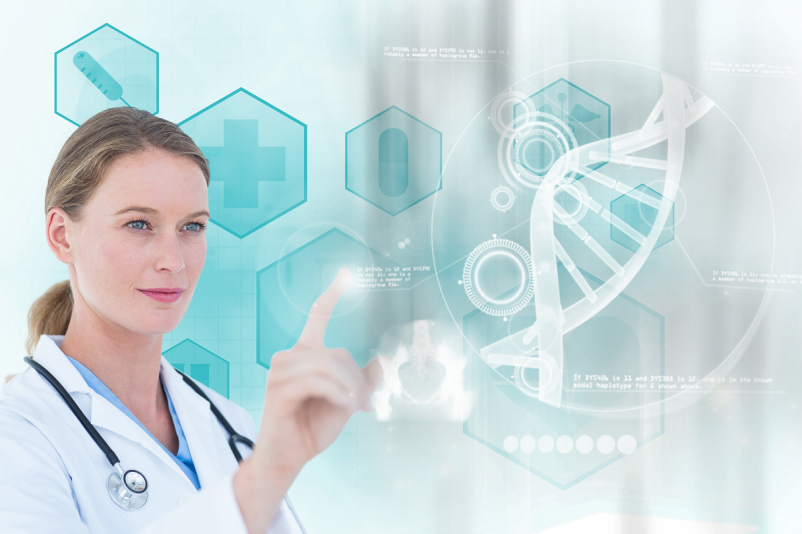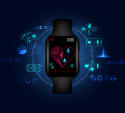Technology trends that will shape healthcare and pharma industries in 2022 and beyond

Technology has helped healthcare and pharma organizations progress rapidly in the last 2 years. It has reshaped how we look at patient care and hospital management while inventing and innovating improved drugs and predicting the course of treatment based majorly on data analytics. From artificial intelligence (AI) to the Internet-of-Medical-Things (IoMT) and cloud computing to predictive analytics, technology is strengthening its positions providing increased efficiency and productivity, while reducing burden.
The need to maintain agility in operations and technology; the importance of collaboration within and between organizations; and the role of solutions that increase visibility and ease day-to-day workloads all have become essential to healthcare providers and IT staff.
Let’s look at five of the technological trends that will continue to influence investments and decision-making in 2022.
Use of AI
Artificial Intelligence (AI) has become a core term in many industries today. With the help of machine intelligence AI perform tasks and make predictions. According to ABI research AI spending in the healthcare and pharmaceutical industries is expected to increase from $463 million in 2019 to over $2 billion by 2025.
Whether it is about supporting improvements in patient care outcomes, access to healthcare services, or patient experience, AI does it all. The use of AI increases the efficiency and productivity of healthcare and pharma organizations. It also enables clinicians and medical practitioners to spend more time in direct patient care.
AI within the pharma industry has many purposes that can accelerate the discovery and development of new drugs. In the next years we can expect a rapid implementation of AI-enabled tools to streamline participant screening for trials as well as for better accuracy during the drug development process.
Predictive Analytics
With the increased use of the Internet of Things (IoT) and Artificial Intelligence (AI), algorithms are fed with historical and real-time data to make meaningful predictions. Clinicians take advantage of these predictive algorithms to improve clinical treatments for their patients and make informed decisions.
In today’s times, precision medicine and genomics are emerging strong. Therefore, researchers and healthcare providers rely on predictive analytics to enhance drug discovery techniques and clinical trials.
Telehealth
Telehealth has become a dominant technology that is acting as a backbone for modern-day healthcare operations and communications. This segment is projected to grow to nearly $400 billion by 2027. Telehealth gives healthcare providers the ability to reach more people and make care more accessible to those who otherwise can’t get it, including those living in rural or isolated communities, those unable to travel easily for healthcare, and those without access to specialized healthcare.
Benefits of telehealth include mitigated burden of treatment, social and psychological advantages, better therapeutic alliances, and most importantly, innovative solutions to overcome the challenges that come in the way of transitioning from in-person to virtual care.
Remote Patient Monitoring
Remote Patient Monitoring refers to the specific technology used to electronically transmit information between patients and physicians. It is one of the delivery systems within the broader telemedicine industry. Unlike other telehealth delivery methods, remote monitoring is typically continuous rather than depending on patient outreach. With other words, patients are required to wear medical devices that will measure critical health data and will provide prompts such as reminders to take medication.
Remote monitoring allows for a less intrusive experience for the patient, whilst still providing a wealth of usable data, reducing stress on frontline physicians and clinicians, and reducing overall costs compared to traditional patient monitoring techniques.
The fact that wearables are becoming smarter and more affordable is increasing the adoption of this technology amongst healthcare providers. According to Research and Markets, the Global RPM systems market is projected to be worth over $1.7 billion by 2027, up nearly 128% from the opportunity the market currently represents.
Big Data
Thinking about big data in healthcare, we’re referring to the information that is collected from patient records and real-world sources. Data that can be used to inform medical practice help measure the post-market success of a product and provide a well-rounded picture of how a treatment or illness affects a patient population.
Big data is helping pharmaceutical companies with predictive, prescriptive, and diagnostic analytics that inform new drug discoveries and developments. Its uses are also applicable to analyzing hospital data, the records of each patient and medical imaging insights.
In the next few years, we can expect the amount of data collected from the patient population to increase, and the methods of collection to diversify. Collection of medical data is essential to the discovery and R&D stages of the drug development process and with enough datasets can have a major effect on the cost for development and trial new drugs.
Conclusion
The use of digital technologies is fundamental to providing a greater, more consistent level of care at a larger scale. We have seen how digitization has positively impacted many other sectors, and it’s clear the pandemic has provided a catalyst for proper review, administration, and implementation of new technologies in the healthcare and pharma industry too.
At last, if you are looking to invest in a clinical trial management system, Clinicubes CTMS is one of the best software solutions on the market. The system simplifies the conduct of clinical trials, provides streamlined processes, and ensures fast and smooth workflows, saving a lot of time and effort and avoiding errors. Clinicubes CTMS accommodates the needs of research organizations to collect, retain, document, and store scientific and patient data. Furthermore, it tracks deadlines, schedules visitations as well as monitors the whole progress and all financial aspects of a clinical trial. Resulting in better control of all activities, better team collaboration and up-to-date access to all required data.
Get in touch and take advantage of what our clinical trial management system offers.




